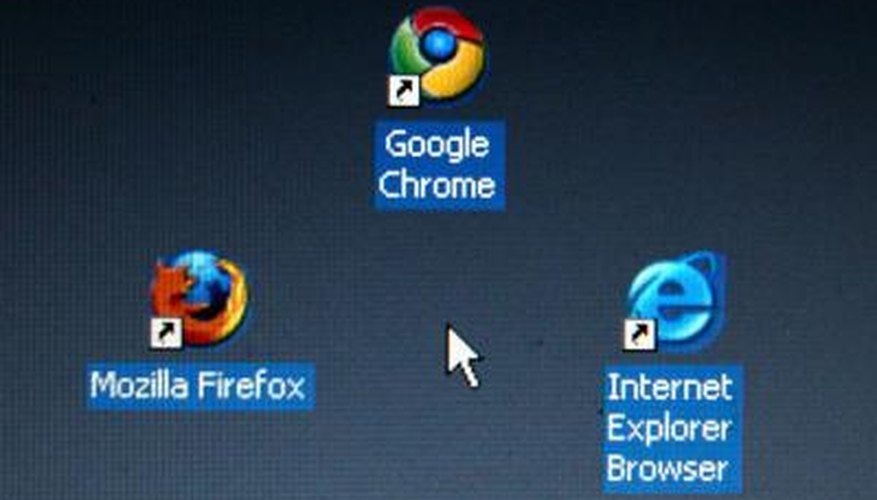Microsoft's Internet Explorer, like any Web browser, can be set to direct all requests for web pages through a proxy server. A proxy server stands in for a client in a network transaction, presenting the request on the client's behalf. The settings for Internet Explorer allow for different proxies to be set for different types of traffic, or for exceptions to the proxy settings, which are web pages that will be accessed directly, even when the browser is instructed to use a proxy server by default for all other requests.
Network Settings
The proxy server settings are part of the network settings section of Internet Explorer's configuration system. Access to this section comes from the "Tools" menu in the menu bar of the browser. The Tools menu is also accessed by a button with a drawing of a cog, shown in the top-right corner of the browser. The "Internet Options" entry in the Tools menu leads to a screen where a variety of settings can be configured. Each category of setting is accessed on a tab at the top of the Internet Options window. The proxy settings are accessed by a button called "LAN settings," which is found on the "Connections" tab. The Exceptions setting is accessed by pressing the "Advanced" button in the "Proxy server" section of this screen.
- The proxy server settings are part of the network settings section of Internet Explorer's configuration system.
- The Exceptions setting is accessed by pressing the "Advanced" button in the "Proxy server" section of this screen.
Exceptions Format
A list of exceptions should be separated by a semicolon (;). There is no need to add spaces on either side of the semicolon. Do not put examples in quotes. They can be either domain names, such as "http://www.example.com," or IP addresses, but do not pad IP addresses with zeroes -- write 123.34.323.1 and not 123.034.232.001.
- A list of exceptions should be separated by a semicolon (;).
- There is no need to add spaces on either side of the semicolon.
Wild card
Entering "http://www.ex" in the exceptions box will not allow all sites starting with that phrase around the proxy. Instead, a wild card character () has to be used, so the exception for all sites starting with "www.ex" is "http://www.ex" with the wild card character.
More Tips
The wild card character is the only tool available to express ranges of addresses. For example, "123.034." exempts a whole range of IP addresses, and "123..323." would exempt a number of IP addresses matching a pattern. With domain names, entering the transfer protocol exempts only that transfer protocol, so "http://www.example.com" would not exempt "https://www.example.com." Leaving off the leading protocol, such as "www.example.com" exempts that address for all protocols. Some sites have sub-domains, which are shown instead of "www" -- for example, "mail.yahoo.com" and "my.yahoo.com." Entering "www.yahoo.com" would not exempt these two sub-domains, whereas entering ".yahoo.com" would. To exempt all variations of a domain regardless of the top-level domain, use ".yahoo." which would exempt "www.yahoo.com," "mail.yahoo.co.uk," "my.yahoo.ca" and so on.
- The wild card character is the only tool available to express ranges of addresses.
- Leaving off the leading protocol, such as "www.example.com" exempts that address for all protocols.
